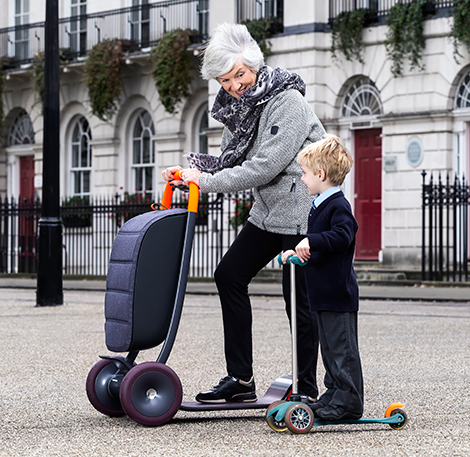
The latest exhibition at the Design Museum in London has tossed up this gem – a wheely scooter for grandma.
The New Old display will be highlighting how designers are contributing to improving life for the growing old age population, with the Scooter for Life challenging the stigmas and storage issues of mobility scooters.
A three-wheel arrangement (two larger in front, one smaller at back) provides stability, with the scooter only moving when you release the brakes, making it safer and more stable – giving users the freedomto nip down to the shop for a copy of the Daily Mail, some milk and a natter about immigrants, while doing it safely and comfortably.

A large front basket functions as a shopping trolley (or as a place to store cats), allowing users to take their scooter into shops and providing a place to carry groceries while leaving their hands free.
An optional seat and electric power would allow users to switch to electronic mode if powering by foot becomes too strenuous.
Paul Priestman, designer and Chairman of PriestmanGoode who created the Scooter for Life, explains: “When we were approached to contribute a mobility solution for the New Old, we immediately agreed that we wanted to design an object that wasn’t just about giving older people more mobility, but to encourage them to stay physically active for longer.
“Designers have an important part to play in affecting behaviour. Over the course of many brainstorming sessions, we came to a number of conclusions.
“Firstly that we wanted to design something for all ages, a product for life, a brand that could follow you through your life as your mobility needs evolved; and that our solution would be a product designed to help people stay fitter for longer and provide older demographics with independence, safety and security.
“We started looking at micro scooters, which are ubiquitous in so many family lives today. Every day, I see children going to school on scooters, and parents riding them home. Looking out from the windows of our office in Central London, we see more and more young professionals using them to commute.
“But at some stage, people stop using them. This may be because of stigma, safety concerns or simply the fact that older generations have not had scooters before, which creates a barrier to late adoption.”
Paul Priestman will be talking at the Design Museum on 7 February to discuss the challenges that exist when designing for all ages.







